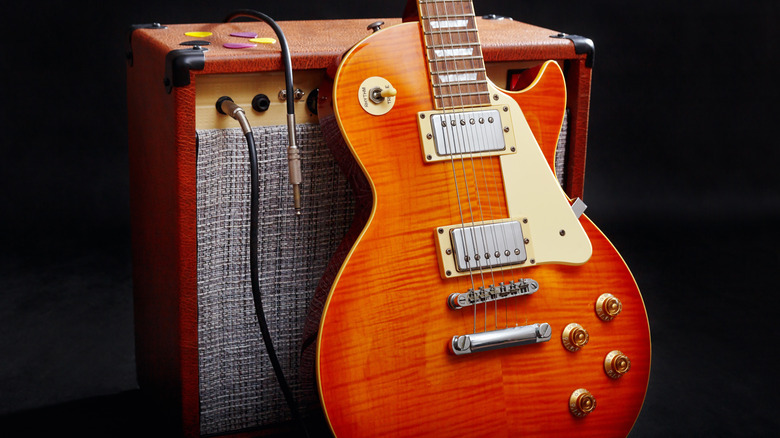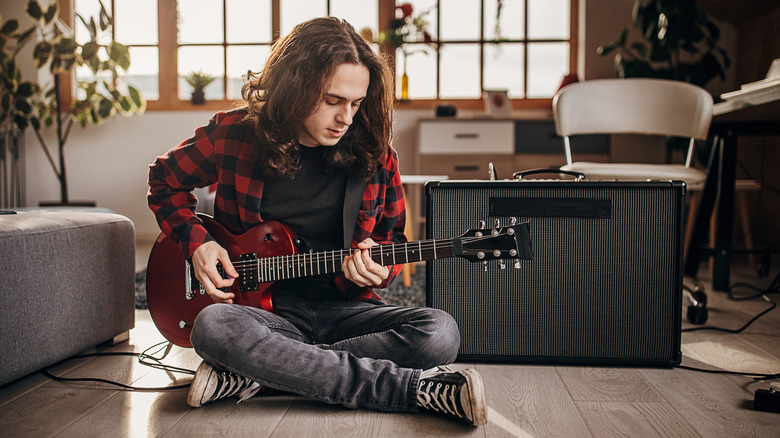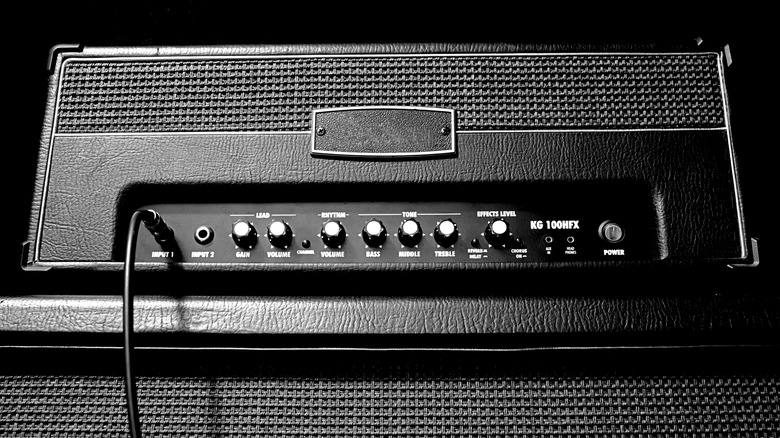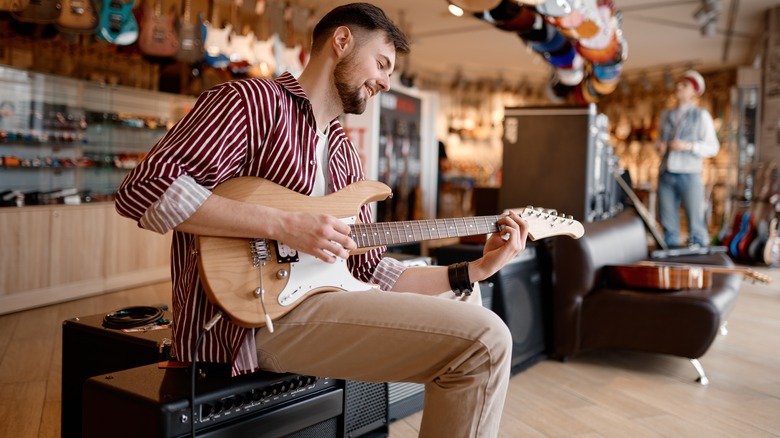How To Find The Sweet Spot On Your Electric Guitar Amplifier
One of the great things about electric guitars and amplifiers is that there is such a wide variety of sounds and tones that a person can achieve while using them. A Gibson Les Paul plugged into a Marshall DSL40 tube amp is going to sound different than if you plug in a Fender Jazzcaster. This isn't even taking into account the pedals a player could be using while they play that radically change what sounds we hear. The type of wood used for the guitar, the heaviness of the strings, the pickups, the distortion, the mechanics of the amplifier, and so much more go into creating the unique sound of a single guitarist.
The question then becomes how one is able to figure out what their sound is with the equipment they have. Just because you buy a high-end guitar with a high-end amplifier doesn't automatically mean that when you plug it in, turn it on, and play it, that it will sound great. There will always be some degree of finessing involved in finding that "sweet spot" with your equipment. It's the one sound that has just the right amount of distortion and the right amount of volume that creates a sound that you just want to hear for hours and hours.
So, how does one find that sweet spot? Well, there isn't exactly one tried and true method that every guitarist uses. It's a matter of taking stock of what you have and taking the time to make adjustments.
Trial and error
The two most basic components of calibrating your amplifier to the sound you want are volume and gain. Typically, you want to start adjusting the volume on your amp first, starting with it at near zero. The reason for this is that all this is doing is affecting the volume of the sound coming from the amp and is not a tonal effect.
Meanwhile, you should have the volume knobs on your guitar turned all the way up. As you gradually increase the volume on your amp, you are going to find the place where the sound is overwhelming and unpleasant. Once you are there, pull things back down until you get to a volume just before you are pushing things. If things are sounding too distorted for you but the volume is right, lower the volume on your guitar for a cleaner sound.
Then you move over to gain, which is a tonal adjustment that controls the drive with which the sound from your guitar goes through the amp. Again, have the knob down at zero and gradually move things up. The higher the gain, the dirtier and more distorted the sound of your playing is going to be. Once you get to the level you are happy with, your volume and gain should be working wonders with each other. If you're using an older tube amp, you may not have a gain option, in which case the volume is going to be your sole adjustment to make. In order to get that dirty sound with one of those, you are going to have to crank that thing pretty high for some natural distortion.
Beyond volume and gain
While volume and gain may be the most basic settings for a guitar amplifier, they may not be the only settings available to you on your equipment. For example, the aforementioned Marshall DSL40 amp also features controls for treble, middle, bass, presence, resonance, and two different reverb options. If you are someone who barely has a grasp on volume and gain, all of these settings may seem a little daunting to you.
The treble, middle, and bass control the various frequencies that the amplifier produces while playing. Treble controls the high end, bass controls the low end, and middle controls, well, the middle. Meanwhile, resonance takes the natural sound of the guitar and reinforces it, whereas reverb prolongs the sound. In an acoustic instrument, that would be achieved by how the instrument plays in a certain room, but the amp can electronically reproduce that effect.
For these, the best place to start is having them all in a neutral position, because having them all turned to zero doesn't give an accurate, natural read of the sound. After you have adjusted your volume and gain and still feel the need to make changes to your sound, this is where you can start messing around with the other knobs. Maybe you want to increase the bass, have less reverb, or have a heartier middle sound. These knobs let you customize that to your heart's desire.
With a lot of amps, you will notice that there are little lights next to some of the adjustment knobs. You can also use these as a guide post to inform you if things may be getting a little too loud or too crunchy or whether a certain effect is being implemented, like reverb.
There is no unimpeachable sweet spot
The sweet spot that a player finds on their amplifier is only a sweet spot because of the person playing. If you scour guitar forums or ask different players about how they get their sweet spot, chances are strong that every person will give you a different answer about how they found it. When I got my first guitar at age 13 and started taking guitar lessons, this was how I was taught to work with my amp, and while I've been happy with the results in my playing, you may find another method in your trial and error experimentation that suits your needs better.
Everyone has the sound they strive towards that best captures what they believe their tone should be, how the genre of music they play should sound, and best captures their style of play. Amplifiers have many different sweet spots depending on who is plugging their guitar into them. Ultimately, you are creating art, and few things are more subjective than how one reacts to art. There is no wrong way to find your right sound.



